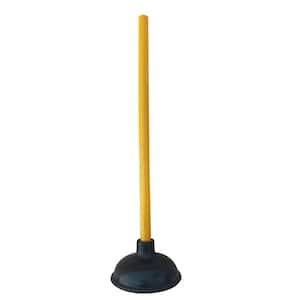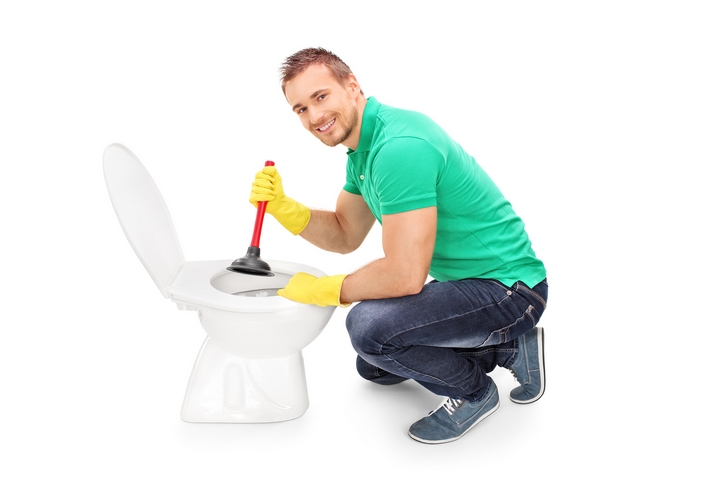Learn Plungers and Drain Cleaners: Best Practices
Learn Plungers and Drain Cleaners: Best Practices
Blog Article
In this article on the next paragraphs yow will discover some outstanding details all about How To Use Your Toilet Plunger Correctly in 5 Easy Steps.

Introduction
Appropriate maintenance of household drains is crucial for stopping blockages and ensuring smooth water circulation. One of the secret tools in every homeowner's toolkit is the bettor, together with different drain cleansers made to take on persistent clogs efficiently. This write-up discovers how to make use of bettors and drain cleansers properly to keep your drains pipes moving openly.
Section 1: Understanding Bettors
Kinds of Plungers
There are a number of kinds of bettors readily available, each made for various sorts of drains and obstructs. One of the most common types include cup plungers, flange plungers, and accordion plungers.
Exactly How Plungers Work
Bettors deal with the concept of creating pressure and suction to dislodge obstructions. When effectively applied over a drainpipe, they develop a vacuum that can take out debris or separate blockages.
Picking the Right Plunger
Choosing the appropriate plunger depends upon the sort of drain and the nature of the blockage. Mug plungers are excellent for sinks and tubs, while flange plungers are better fit for commodes due to their design.
Typical Errors with Bettors
Staying clear of these mistakes guarantees effective plunging: incorrect seal around the drain, not enough force, and not clearing bordering particles.
Section 2: Utilizing Plungers Properly
Preparation
Before plunging, make sure the bettor covers the drainpipe completely and forms a tight seal. Clear any type of noticeable particles around the drainpipe opening.
Strategy
Beginning with gentle diving activities to build suction. Boost stress progressively, using a consistent rhythm. Repeat as essential until the drain clears.
Repairing Tips
If plunging doesn't function, attempt changing the seal, applying petroleum jelly for a far better seal, or making use of a different type of bettor.
Area 3: Comprehending Drainpipe Cleansers
Kinds Of Drain Cleansers
Drain cleaners can be chemical or enzymatic. Chemical cleansers use solid chemicals to liquify clogs, while enzymatic cleansers make use of all-natural enzymes to break down raw material.
How Drain Cleansers Work
Chemical cleaners respond with blockages to liquify them, while chemical cleaners break down organic materials like hair and grease without harming pipes.
Safety Considerations
Always use handwear covers and eye security when utilizing chemical drain cleaners. Ensure adequate air flow and adhere to maker directions carefully.
Eco-Friendly Alternatives
Think about utilizing vinegar and cooking soda or enzyme-based cleansers for environment-friendly options that are much safer for pipes and the atmosphere.
Section 4: Making Use Of Drain Cleaners Properly
Application Techniques
Put chemical cleaners straight right into the drain opening. Permit them to work for the suggested time prior to flushing with hot water. Chemical cleansers ought to rest over night.
Precautions
Prevent blending various types of cleaners, as this can create poisonous fumes. Never use chemical cleaners together with a bettor, as spilling can take place.
Handling Stubborn Clogs
For persistent clogs, consider using a plumbing snake or calling a specialist plumber to prevent damages to pipelines.
Final thought
In conclusion, understanding just how to make use of plungers and drain cleansers efficiently is vital for maintaining healthy plumbing systems. By choosing the right tools and techniques, homeowners can take on minor blockages and avoid significant plumbing concerns down the line.
5 Steps on How to Use a Plunger Effectively
Creating a Seal: Place the rubber cup of the plunger firmly over the toilet drain hole to create an airtight seal. This seal is crucial to prevent air from escaping and ensure effective plunging.
Plunge Gently: Gently press the plunger down to compress the air inside without causing splashing. This careful action sets the stage for effective unclogging without creating a mess.
Maintaining Pressure: Consistently apply pressure to the plunger while pushing and pulling it up and down. This sustained pressure generates the force needed to dislodge the clog.
Breaking the Clog: Continue plunging until you feel the clog release. Look for the water to start draining, indicating successful removal of the blockage.
Flushing and Cleaning: After clearing the clog, flush the toilet to confirm it's working properly. Clean the plunger with warm, soapy water and disinfect it for future use to maintain hygiene.
Additional Tips on How to Correctly Use a Plunger
if you encounter resistance, add some water to the bowl to create better suction;
check the plunger for any rubber cracks to ensure it's in good condition;
exercise patience and persistence, as certain clogs might need multiple attempts.
Mistakes to Avoid when Using Toilet Plunger
avoid using excessive force, as it may damage the toilet;
don't rush the process; take your time to ensure a proper seal and pressure;
never use a plunger if you've recently used chemical drain cleaners
Conclusion
Mastering the art of how to properly use a plunger is a valuable skill for every homeowner. By employing the correct techniques, you can effectively address clogs and ensure your toilet functions smoothly. Patience, persistence, and proactive in maintaining your plunger's hygiene are key to success in this endeavor.
Armed with these skills and principles, you can confidently handle plumbing issues as they arise, promoting a well-functioning and hygienic home environment.
https://homealliance.com/blogs/how-to-effectively-use-a-plunger-the-ultimate-guide

Application Techniques
Put chemical cleaners straight right into the drain opening. Permit them to work for the suggested time prior to flushing with hot water. Chemical cleansers ought to rest over night.
Precautions
Prevent blending various types of cleaners, as this can create poisonous fumes. Never use chemical cleaners together with a bettor, as spilling can take place.
Handling Stubborn Clogs
For persistent clogs, consider using a plumbing snake or calling a specialist plumber to prevent damages to pipelines.
Final thought
In conclusion, understanding just how to make use of plungers and drain cleansers efficiently is vital for maintaining healthy plumbing systems. By choosing the right tools and techniques, homeowners can take on minor blockages and avoid significant plumbing concerns down the line.
5 Steps on How to Use a Plunger Effectively
Creating a Seal: Place the rubber cup of the plunger firmly over the toilet drain hole to create an airtight seal. This seal is crucial to prevent air from escaping and ensure effective plunging. Plunge Gently: Gently press the plunger down to compress the air inside without causing splashing. This careful action sets the stage for effective unclogging without creating a mess. Maintaining Pressure: Consistently apply pressure to the plunger while pushing and pulling it up and down. This sustained pressure generates the force needed to dislodge the clog. Breaking the Clog: Continue plunging until you feel the clog release. Look for the water to start draining, indicating successful removal of the blockage. Flushing and Cleaning: After clearing the clog, flush the toilet to confirm it's working properly. Clean the plunger with warm, soapy water and disinfect it for future use to maintain hygiene. Additional Tips on How to Correctly Use a Plunger
if you encounter resistance, add some water to the bowl to create better suction; check the plunger for any rubber cracks to ensure it's in good condition; exercise patience and persistence, as certain clogs might need multiple attempts. Mistakes to Avoid when Using Toilet Plunger
avoid using excessive force, as it may damage the toilet; don't rush the process; take your time to ensure a proper seal and pressure; never use a plunger if you've recently used chemical drain cleaners Conclusion
Mastering the art of how to properly use a plunger is a valuable skill for every homeowner. By employing the correct techniques, you can effectively address clogs and ensure your toilet functions smoothly. Patience, persistence, and proactive in maintaining your plunger's hygiene are key to success in this endeavor.
Armed with these skills and principles, you can confidently handle plumbing issues as they arise, promoting a well-functioning and hygienic home environment.
https://homealliance.com/blogs/how-to-effectively-use-a-plunger-the-ultimate-guide

I was introduced to that editorial on How to Use a Plunger to Unclog a Toilet or Drain from someone on our other domain. Feel free to set aside a second to distribute this content if you enjoyed reading it. We appreciate reading our article about How to Unclog Your Sink with a Plunger.
Visit My Web Page Report this page